Have you ever wondered what 225 million years old looks like? What about walking on something 225 million years old? Well, I went to find out, and it was only 45 minutes drive from my home on the Gold Coast. It is the Gondwana Rainforest, part of the Lamington National Park in the Gold Coast Hinterland.
Many people, particularly those who go bushwalking, would have read or heard of the word ‘Gondwana’. Gondwana means ‘Forest of the Gonds’ and refers to a time long, long ago (about 300 million years ago) when the Earth’s single land mass Pangea separated into two super continents: Laurasia and Gondwana. The present-day continents of South America, Africa, Australia and Antarctica, along with India, New Zealand, New Guinea, Madagascar, Arabia and other parts of the present Middle East made up Gondwana. Then, 120 million years ago Gondwana began to break up. Australia remained attached to Antarctica until about 65 million years ago when it was set adrift and made it’s way north (we also broke a little piece off, sent it eastwards and called it New Zealand. You’re welcome!)
So, now that you have had that brief history lesson, you will be better able to understandt the wonder of my Dave’s Creek Country walk; a 12.4 km circuit that takes in a variety of forest types, incredible flora and fauna and some breathtaking views. Starting at Binna Burra (45 minutes drive from Surfers Paradise) the walk is listed to take four hours - unless of course you are a photographer in which case it could take you six hours or more!
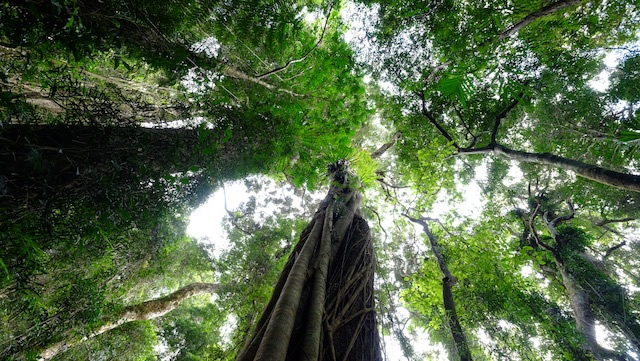
The walk starts off in the Warm Subtropical Rainforest (warm Complex Notophyll Vine Forest to the professionals). This is rainforest species number one in Lamington National Park. You could be forgiven for walking along looking up with your mouth open in awe. Here, in this photo, a Strangler Fig has taken over the host tree and you can see a number of Crow's Nest Ferns and the thick, woody vines the forest is named after.
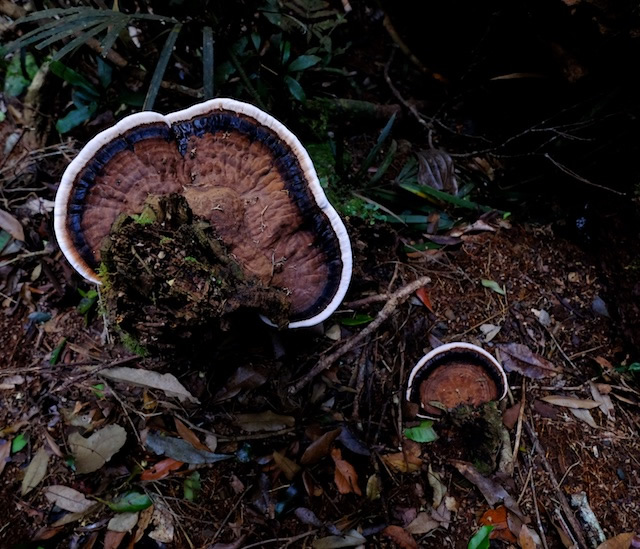
Try not to spend all your time looking up! There is an amazing variety of fungi on the forest floor.
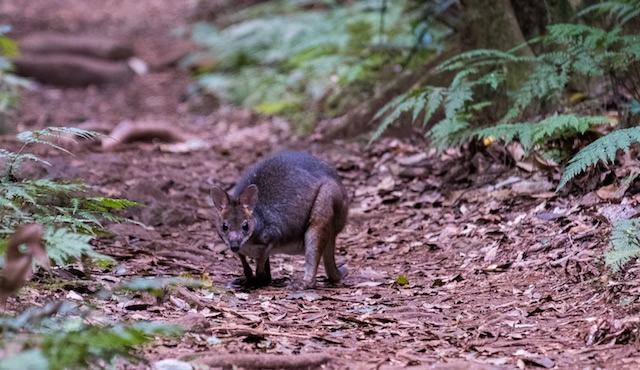
This little guy was there. The Red Legged Pademelon lives in the park and forages on the forest floor. They are very shy and will hear and see you long before you see them. Your best indication that one is there is the rustling in the bushes as it scurries away. Stay on the path and don't go chasing them!
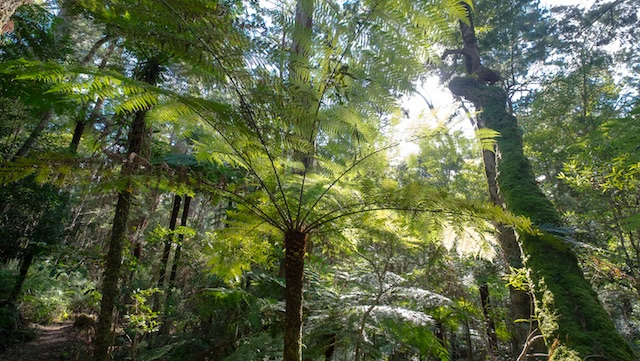
Ferns were among the first plants to exist on land and the Gondwana Rainforests of Australia World Heritage Area is home to many ancient fern families dating back 300 - 400 million years.
The Rough Tree Fern is a subtle indicator that you have moved from the warm to the Cool Subtropical Rainforest. The canopy is not quite as dense, there are a lot more small ferns and moss rocks and tree trunks.
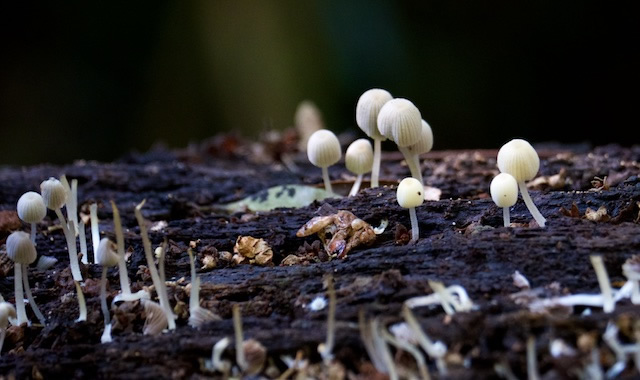
Recycling in it's purest form - fungi working to break down a fallen tree.
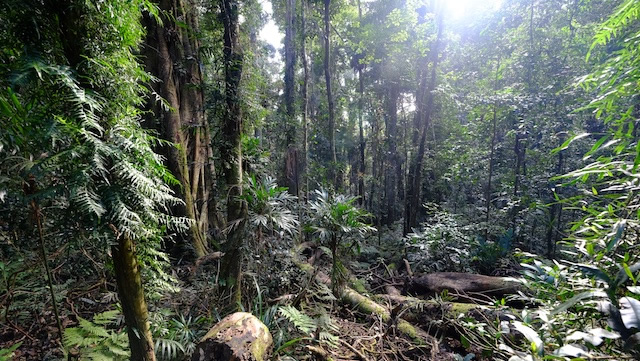
Fallen Giant - ex-Tropical Cyclone Debbie caused some damage to Lamington Nation park. A number of walks will remain closed for a long time as park rangers work hard to clear the debris from paths and make the area safe.
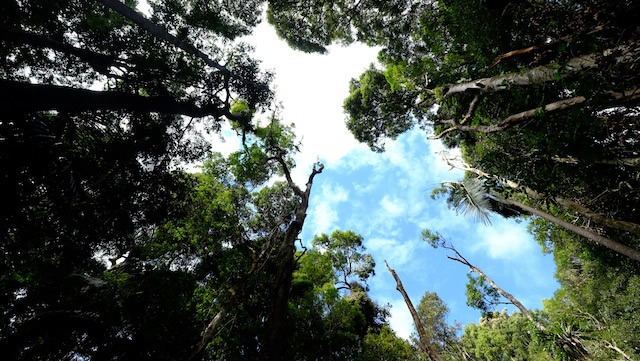
The good news is that a large hole in the rainforest canopy lets in a massive amount of light, so now it's a race for the clouds for all of the plants below.
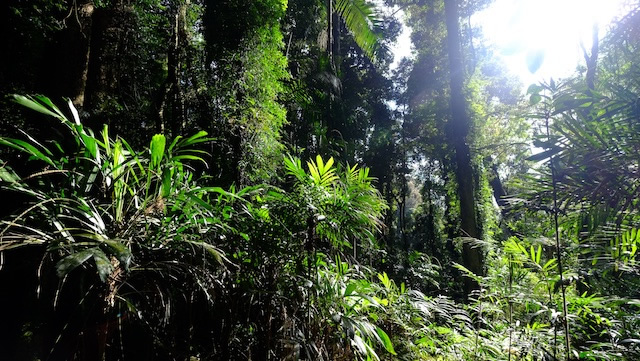
The amount of sunlight flooding in through the hole in the canopy is quite alarming after walking through the filtered light in the rainforest.
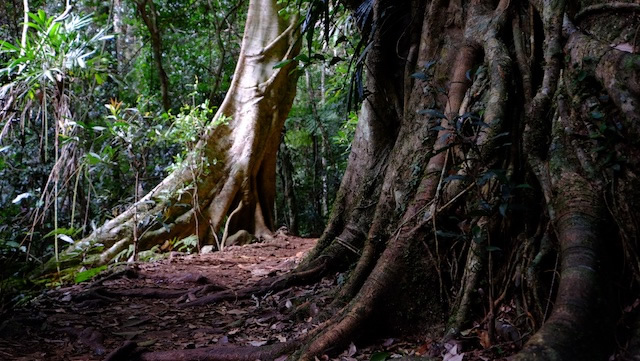
The large buttressed roots of the White Booyong (left) and Black Booyong (right). The black one has a Strangler Fig growing on it. Notice the roots breaking through the soil on the track. It pays to watch your step in the rainforest as the trail is strewn with tree roots which are often raised and slippery.
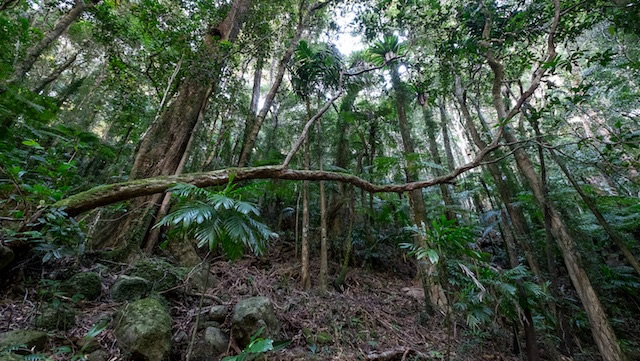
The Warm Temperate Rainforest (simple Notophyll Evergreen Vine Forest) - the third rainforest system in the park. This area is less dense than the other two and distinguished by the small Walking-Stick Palms and lichens on the tree trunks.
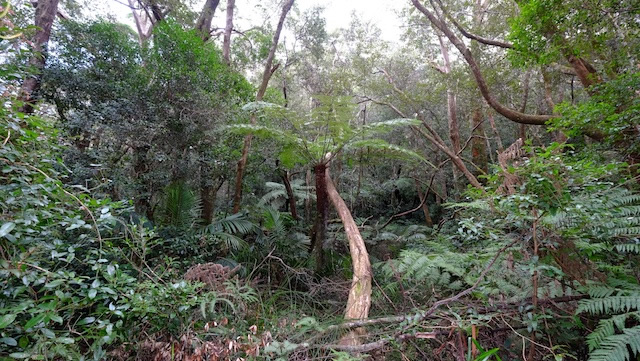
Blue sky and different plants mark another change in ecosystem. The Tree-Fern, Tallowood (right) and Blackbutt (left) trees indicate you're now in the Eucalypt forest. You can literally turn around on the spot here and look back into rainforest.
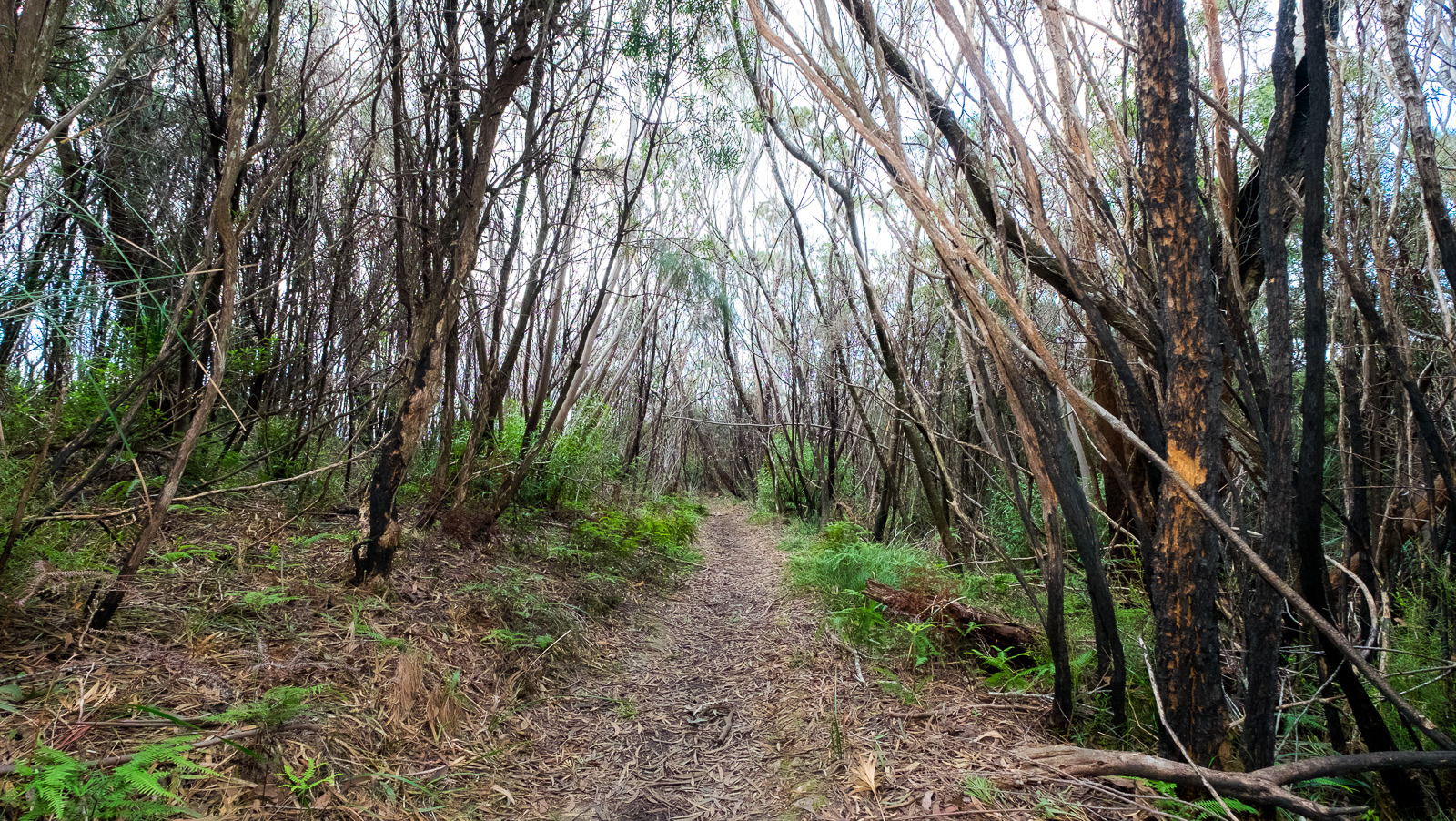
The Mallee Community - a brief stand of small, thin Eucalypt trees with an understory of ferns and sedge. This area is prone to fire, however the trees are protected by a large underground root called a lignotuber.
As soon as it starts it ends, and the Mallee gives way to the Heath Community.
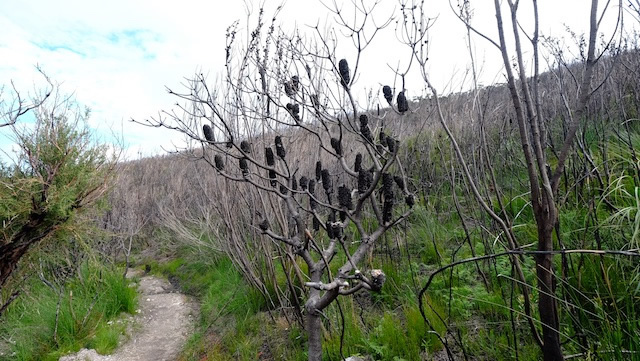
The Heath Community is a harsh, windswept environment on the edge of the cliff. There is no overhead canopy here, everything is exposed and fire prone.
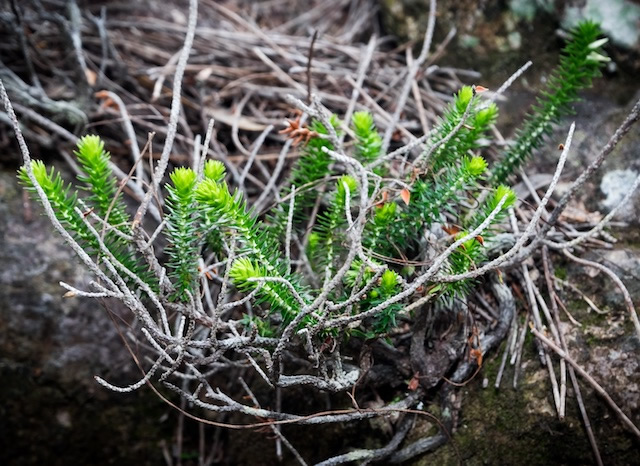
It's a case of adapt or die in the heath. The soil is shallow and low in nutrients. Plants like this Beard Heath have a shallow root system and short, prickly leaves to reduce water loss.
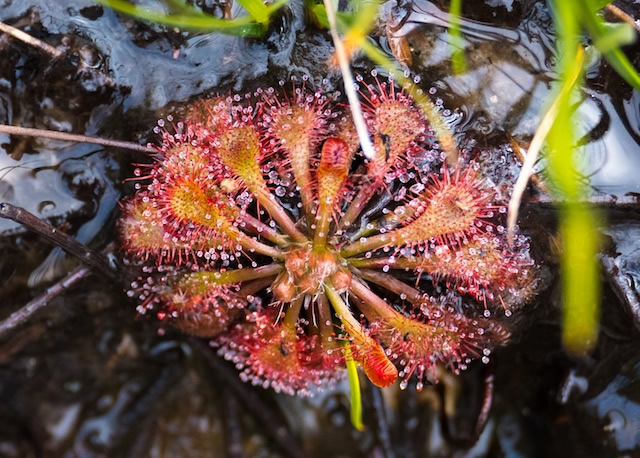
There is a small wet area beside the track on the ridgeline were you will find a variety of very small plants such as this Sundew thriving. The Sundew is a small carnivorous plant that trap insects on its sticky leaves then slowly digests them. I spent a lot of time here taking photos of life in minature!
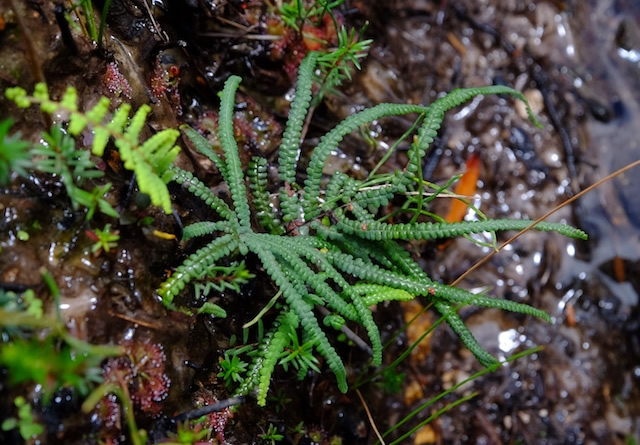
Life in minature. Some of Lamington's plants and animals are survivors of prehistoric times when ferns, then pines, then flowering plants first appeared. These age-old Australians have endured events in geological time that saw dinosaurs and three-quarters of all living species disappear.
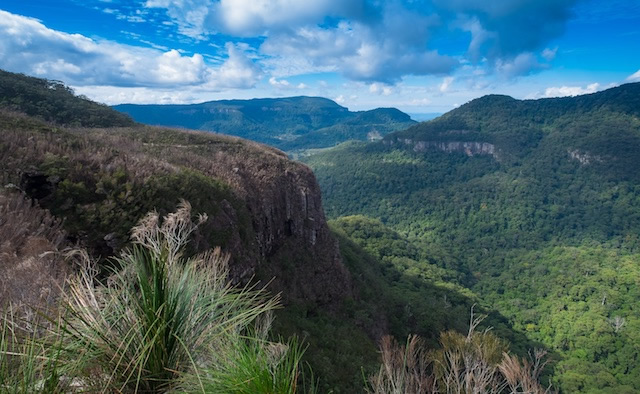
When I finally looked up from the tiny plants this was the view presented before me. The sheer cliff faces and deep valleys are evidence of our planets violent past. This area is part of the Tweed Sheild Volcano which was active 23 million years ago. When it erupted it spewed lava from Lismore in the South to Tamborine in the north.
When the volcanoes became dormant, water took over. Over time, spectacular waterfalls, deep gorges, distinctive peaks and rugged cliffs were gouged out of the volcanic rock.
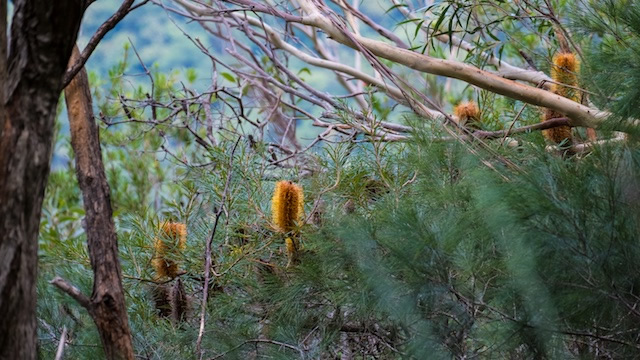
The edge of the cliff-line is studded with stands of Eucalypt and Banksia trees, but not like the ones you are used to seeing. These trees are shrubbier, stunted and windswept due to the prevailing winds and harsh weather.
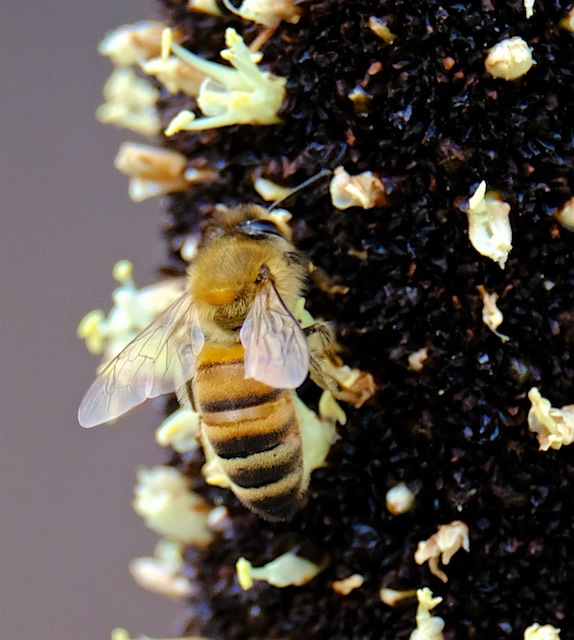
Once again I got sidetracked photographing very small things (I really need a macro lens!). Here's a Honey Bee on the flower spike of a Grass Tree.
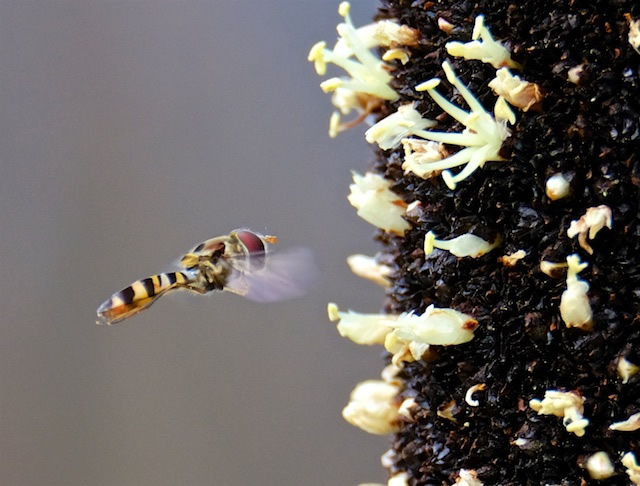
A Hover Fly looking for lunch on the flower spike of a Grass Tree. Hover Flies feed on nectar and are major pollinators of many plants, a job we usually associate with bees.
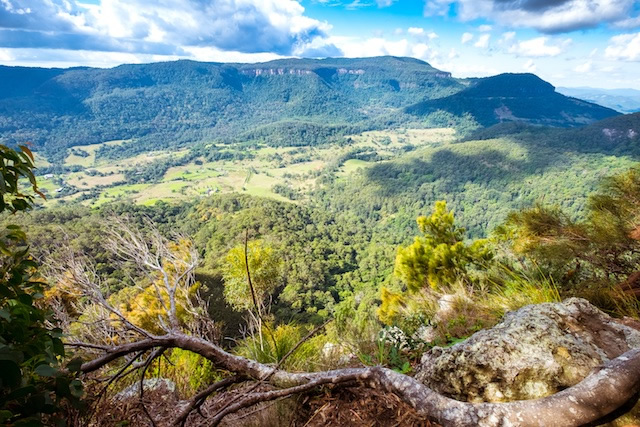
I finally reached my planned lunch spot at Numinbah Lookout, the sun came out from behind the clouds and I managed to take this overexposed photo. It always pays to check your settings after working in low light and the shadows! Nevertheless, it was a fantastic resting place and the massive volcanic rock I was sitting on was a stark reminder of how violent the volcanic activity must have been all those years ago. Can you imagine the force required to throw a boulder the size of a small car 50km?
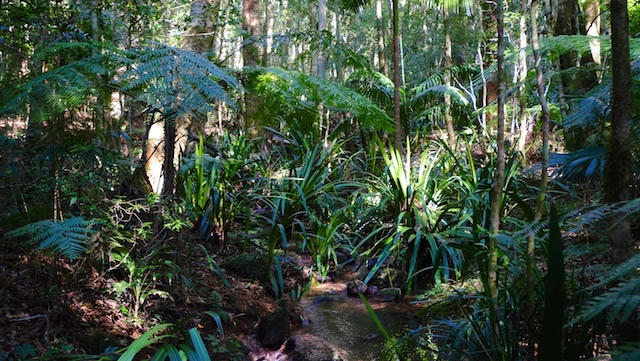
The walk back to base is just as interesting as the walk out and everything looks completely different. I didn't even notice this little creek in the Warm Temperate Rainforest. I'm going to make a point of going back after some rain to see the little creeks and waterfalls running.
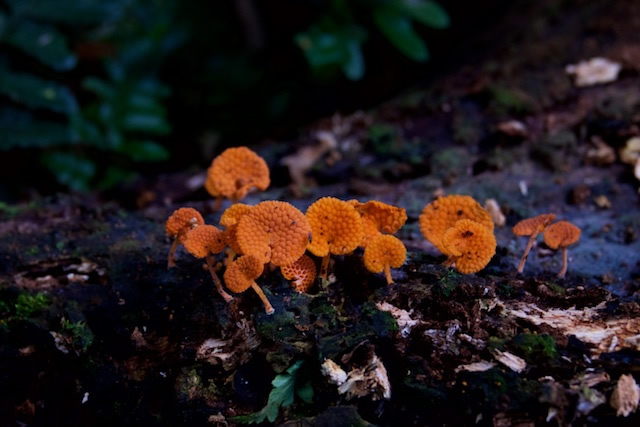
I am always amazed by the array of shapes, sizes and colours of fungi. This particular colony was tiny, as you can see by the small pieces of moss in the image.
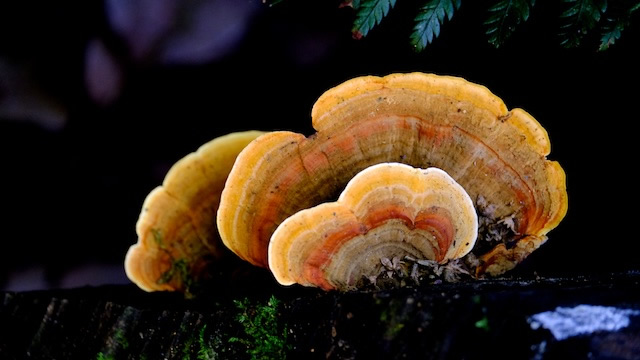
This particular fungi was in almost darkness, so I had to light it up with some off camera flash. The photo doesn't do it justice - there was so much detail in it.
By the time I got back to my car I had been gone just over six hours in total. This is a good, solid walk if you want to stop to admire the plants and views. You will do it quicker (the guide suggests four to five hours), if you don't make the stops I did.
This is a great day out for grown-ups. Most groups and young families choose to do the shorter, easier walks. If you want some peace and tranquility then this is it!
Prepare for the walk in advance. It is remote out at the furtherest point and help is a long way away. In fact, I didn't see anyone for at least four hours! Check the weather and tell someone were you are going. Make sure you get a park map from the National Park visitors centre.
Most of all look but don't touch!
Note: I would like to make special mention of the Lamington Natural History Association Inc and their 'Track Guide' that I picked up from the National Park visitor centre. Written by Leslie Hutley it is a wealth of information and a perfect accompaniment to the walk. My blog post would not have been possible without it. Thank you.

Posted By Nathan
Hi there! I'm Nathan Brayshaw, an adventure travel photographer and writer based on Queensland’s Gold Coast in Australia. I've always had a deep love for nature and a yearning to explore the world, which has led me on thrilling expeditions to remote and exotic destinations.
As a photographer, I'm passionate about capturing the raw beauty of our planet, from breathtaking landscapes to awe-inspiring wildlife, and everything in between. My camera is my constant companion as I journey through dense jungles and summit towering peaks, always in search of the perfect shot that tells a story.
In addition to my photography, I'm also passionate about writing, as it allows me to share my experiences and insights with a wider audience. I believe that through my work, I can encourage others to step out of their comfort zones, explore the unknown, and embrace the thrill of adventure.
With my passion for exploration, my camera in hand, and my heart set on discovering the world's wonders, I'm constantly pushing the boundaries of adventure travel photography and writing. Join me on this incredible journey as we uncover the breathtaking beauty and diverse cultures that our planet has to offer.
Updated : 23rd July 2021 | Words : 1559 | Views : 4999 | Comments : 1
1 Comment
Amazing article, I felt like I was seeing nature in a whole different way,a personal and unspoiled way. Loved it, thanks for sharing this awesome insightful journey.
Posted By Alberta on Monday 10th July 2017 @ 01:13:00



